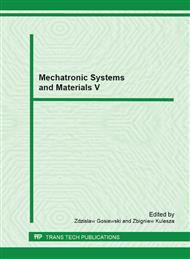p.315
p.321
p.326
p.332
p.338
p.344
p.350
p.356
p.365
Surface Structure of Components Created by Stereolitography
Abstract:
Stereolithography is an additive rapid prototyping method. This method is based on the principle of solidifying a liquid photopolymer (resin) by laser radiation. Models obtained with this method are characterized by a specific surface structure called stairstep effect. It causes that, the surface should be processed by additional finishing (postprocessing). To minimize the additional machining process, the model should be set in the relation to incremental layers so that the roughness of significant surfaces be optimal.
Info:
Periodical:
Pages:
338-343
Citation:
Online since:
March 2013
Authors:
Price:
Сopyright:
© 2013 Trans Tech Publications Ltd. All Rights Reserved
Share:
Citation:


